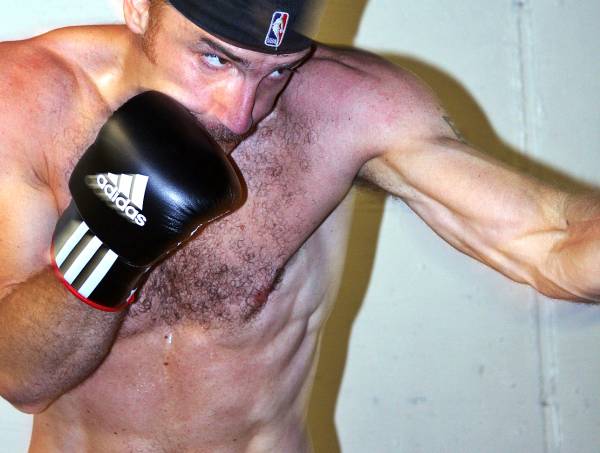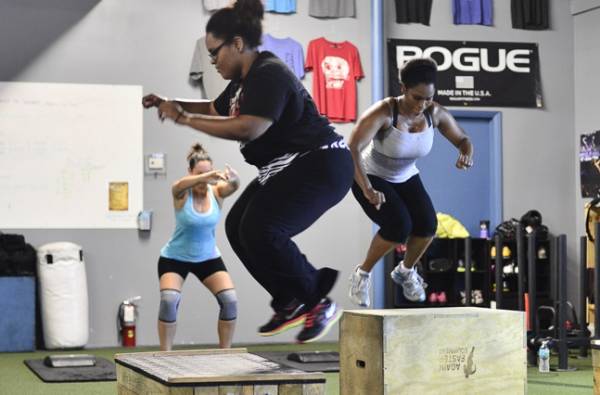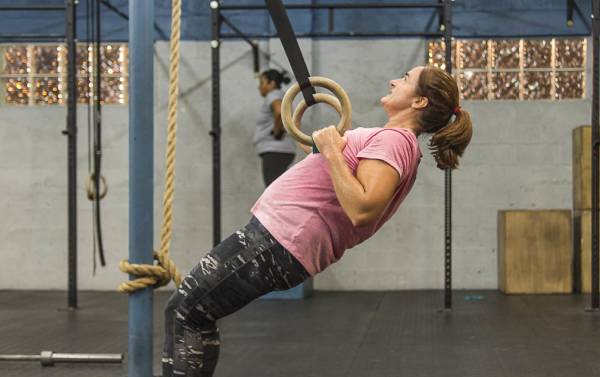In 1985, the movie Weird Science depicted two teenage boys who created the perfect woman with the help of their computer and a sort of magic electrical accident. The end result was Lisa, played by model-actress Kelly LeBrock.
LeBrock was a perfect representation of the female body of the 1980s. Along with LeBrock, Cindy Crawford, Elle Macpherson, and Naomi Campbell became household names based solely on their looks and their bodies. All embodied the trend in female figures – long, lean, underweight, and of course, utterly unattainable for most.
Model Naomi Campbell walking the runway.
Nowadays, We Like Big Butts
Thirty years later in 2015, the supermodel ideal has taken a back seat, literally and figuratively, as the butt has become all the rage. From Jennifer Lopez to Kim Kardashian, butts are in.
Much of our cultural focal point, from the fashion industry to the music industry, seems to be on obtaining this ideal body. In the fitness world, it is difficult to escape images of the ideal body type, regardless of what era we’re in. Fitness magazines and websites regurgitate the same type of pictures with the same types of articles – get bigger arms, washboard abs, or a bigger butt.
Obsession with body type is far from strictly a female-based issue. Men desire things like toned arms and washboard abs, too. Several years ago at the peak of my involvement with boxing, I got myself below 4% body fat. I was consumed by working out and conditioning for the ring. I was also consumed with being completely ripped.
“Obsession with body type is far from strictly a female-based issue. Men desire things like toned arms and washboard abs, too.”
While I was indeed ripped, people noticed my obsession and my gaunt frame. “You’re working out too much,” and, “You’re too thin,” were typical comments. At the time, people close to me could see what I couldn’t see. I wasn’t myself and I certainly wasn’t healthy. Back then, I couldn’t even fully explain what I was after. I just was driven to achieve an unattainable and unsustainable physique.

Back then, I was driven to achieve an unattainable and unsustainable physique.
The Grass Is Always Greener
There’s certainly no harm in wanting to improve something, whether it’s upgrading the car we drive, the job we have, or the body we live in. Whether we admit it or not, we all care about how we look. And all of us want to like what we see when we look in the mirror.
Studies back up the fact that men and women struggle with body type ideals similarly. In a study taken right from a page of the Weird Science script, British researchers took forty heterosexual men and women and had them design the ideal bodies for a hypothetical mate. Both men and women created extreme body types, beyond that of most average people.
“In the fitness world, it is difficult to escape images of the ideal body type, regardless of what era we’re in.”
While there were some differences, both sexes felt the ideal male would be an inverted pyramid shape, with broad shoulders and a narrow waist, and the ideal female body type would be the hourglass shape, with a small waist-to-hip ratio. The participants also preferred slimmer bodies than they themselves had.
This last point is the crux of the whole focus on body image. We aren’t satisfied with what we naturally or actually have. In a study conducted by North Carolina State in 2005 that included over 6,000 women, only 8% of the women were hourglass shaped. The rest were classified as banana, pear, or apple shaped. We all have a body, but it seems we want a different one.

Real-World Examples
Next to death and paying taxes, one of life’s certainties is that at some point we all must grapple with our body image. It’s too big, too short, too small, or not athletic enough. While everyone has a body, some of us are built like Great Danes, while others of us are built like Jack Russell terriers. The trick is to see your own true body and not covet someone else’s. We can’t all look like Beyoncé or David Beckham.
It helps to have examples in this journey. Fitness trainer and writer Neghar Fonooni recently posted pictures of her own “reverse progress.” She went against the trend of the before-and-after fitness photo and posted pictures of her actually gaining weight and losing the ripped abs.
“Whether we admit it or not, we all care about how we look. And all of us want to like what we see when we look in the mirror.”
I am also well versed in the process of reverse progress transformation. My temporary obsession with being 4% body fat led to breakdown and injury. I have since come to grips with my natural body type and feel more comfortable in my own skin. My body now is natural, attainable, and sustainable. Of course, I also don’t have the six-pack abs anymore and had to come to grips with that, as well.
Start the Process Now
Making peace with the loss of what society deems ideal is a process. It starts with an honest assesmement of your true and natural physique. The following checklist of questions are a good place to start:
- What is your natural body type? Ectomorph, endomorph, or mesomorph? Are you a Great Dane, Labrador, or Jack Russell?
- Are you often injured, unhealthy, or at risk of negative health consequences because you are over- or underweight? Remember, while obesity is correlated to metabolic syndrome and early death, being underweight is also.
- Do you rely on artificial support mechanisms such as supplements, medical procedures, or unsustainable training practices to achieve the body you desire?
- Do you define yourself in large part by how your body looks?

What Do You Really Want?
Achieving the ideal body is up to us and is based around how we define it. The qualities behind getting and sustaining a better body are admirable ones. I admire the discipline of bodybuilders and the ironclad work ethic of professional athletes. I am not here to pick a fight with people who desire six-pack abs.
“Making peace with the loss of what society deems ideal is a process. It starts with an honest assesmement of your true and natural physique.”
What is important is your prerogative. But my intention is to ask pointed questions and challenge the notion that a certain body type is ideal or better than another. I want you to examine and understand your own prerogative. Because more important than the aesthetic of our bodies is a sense of real health and wellness. Big arms and big butts aren’t necessarily true pictures of what health looks like.
So what is the ideal body type? In the end, it comes down to finding your own best body. What an authentic body is will be different for each of us, but I’m pretty sure it has little to do with a big butt or ripped abs.
You’ll Also Enjoy:
- 144lbs: Why Female Athletes Should Toss the Scale and Get a New Perspective
- Why the Scale Lies About Your Health (And Where to Find the Truth)
- 6 Daily Practices for Learning to Love Your Body and Yourself
- What’s New on Breaking Muscle Today
References:
1. Helen McCormack, “The shape of things to wear: scientists identify how women’s figures have changed in 50 years,” The Independent; November 2005.
2. Brian Alexander, “Ideal to real: What the ‘perfect’ body really looks like for men and women, ” Today; May, 2014
3. Abby Lerner, “This Fitness Pro Gained 14 Pounds and She’s Never Felt Better,” Greatist, May 2014.
Photo 1 courtesy of Shutterstock.
Photos 2-4 courtesy of CrossFit Empirical.






